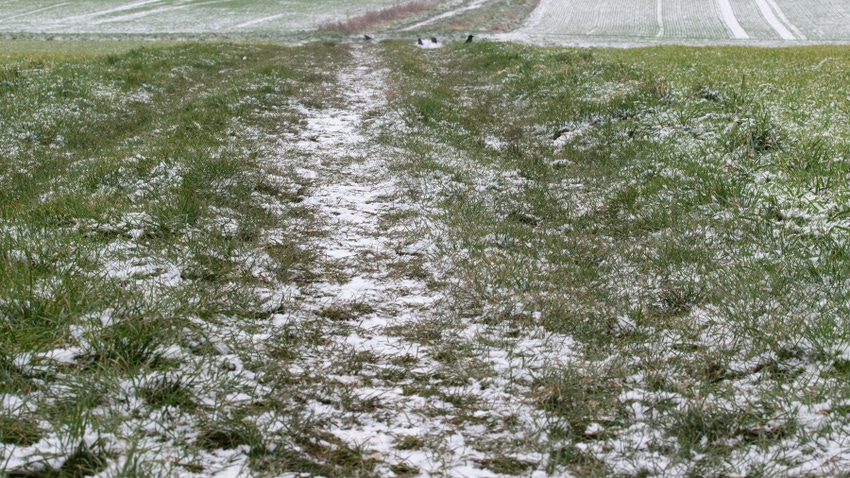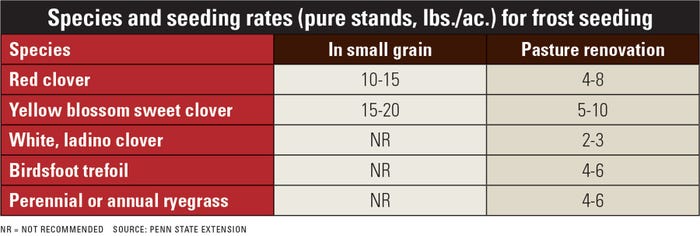
If your pasture stands are looking thin, frost seeding could be an option, and now is the time to do it.
According to Penn State Extension, frost seeding is less expensive than tillage and can be as effective, so long as it’s done at the right time and managed properly.
Frost seeding works best when the soil “honeycombs” — that is as temperatures warm up above freezing during the day but drop below freezing at night, the seeds have an opportunity to drop below the surface.
Trampling livestock also can be good to obtain good soil-to-seed contact.
Here are seven tips for successful frost seeding compiled from online sources such as Penn State Extension, University of Vermont Extension and from Scott Rushe, forage market development manager for Seedway:
1. Seed where it needs it. Seed-to-soil contact is critical to the success of frost seeding. The best candidate for frost seeding is the “run out” field, areas with bare or exposed soil.
Fields with a thick layer will not frost-seed well because the seed will not easily gain contact with the soil.
2. Seed early in the season. The best time to seed is early in spring after the snow is gone but while the ground is still frozen. The repeated freezing and thawing will cause some of the seed to fall into soil cracks and germinate.
Frost seeding can be done over a thin layer of snow, but rapid snowmelt can cause the seed to be washed off.
Frost seeding does not work on sandy soils where there is no swelling and shrinking associated with the freeze-thaw cycle.
Using a chain drag or running over the field lightly with a disk can help open the stand, too.
3. Do it early in the morning. Early-morning frost seeding, before the soil surface begins to thaw, is recommended. If the soil surface is "slimy,” wait to seed until you get another morning when the soil has frozen again.
4. Loamy clay is best. According to Penn State Extension, frost seeding works well on loamy and clay soils that hold water, but it is not suited for use on sandy or shaley soils that dry out quickly.
5. Legumes are better than grass. Legumes have a much better success rate than grasses. Red clover is the species most recommended for frost seeding because of seedling vigor — and wide tolerance to pH, fertility, drainage and drought.
Rushe says that birdsfoot trefoil is slow to establish but is bloat-free and, when established, can do well in a wide range of conditions. A mixture of trefoil with red clover may be desirable.
White clover and ladino clover will last somewhat longer than red clover, Rushe says, but they are less tolerant of low fertility, drought and overgrazing.

6. Use the right equipment and method. Frost seeding can be done with any type of a broadcast seeder. This can be done by hand, tractor 3-point hitch or ATV.
If using a broadcast seeder, determine width to avoid seed overlapping.
A no-till drill can also be used to frost seed, but this also increases the number of trips across a field.
7. Manage the stand. Once the stand has been seeded and is growing, controlling weeds is crucial for the first couple of months.
Rushe suggests moderate periodic grazing after it starts growing, but avoid close grazing. Some mowing may be necessary to help control weeds.
Here are other useful web resources:
About the Author(s)
You May Also Like






